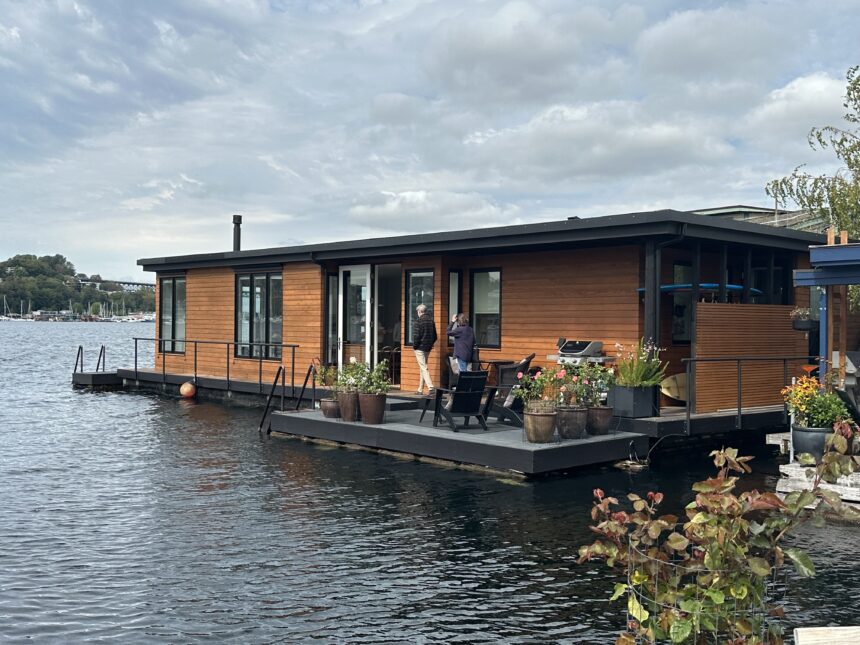In the heart of the city, sustainable technology is making waves.
Seattle’s vibrant community of floating homes is establishing itself as a hub for advanced green building. While some homes charm with ingenious design, others showcase cutting-edge systems that drastically reduce energy consumption and environmental impact.
Earlier this month we stopped by the Seattle Floating Homes Tour to take a closer look at three standout homes redefining sustainability on the water.
Peter Erickson & Brigitte Bertschi’s home
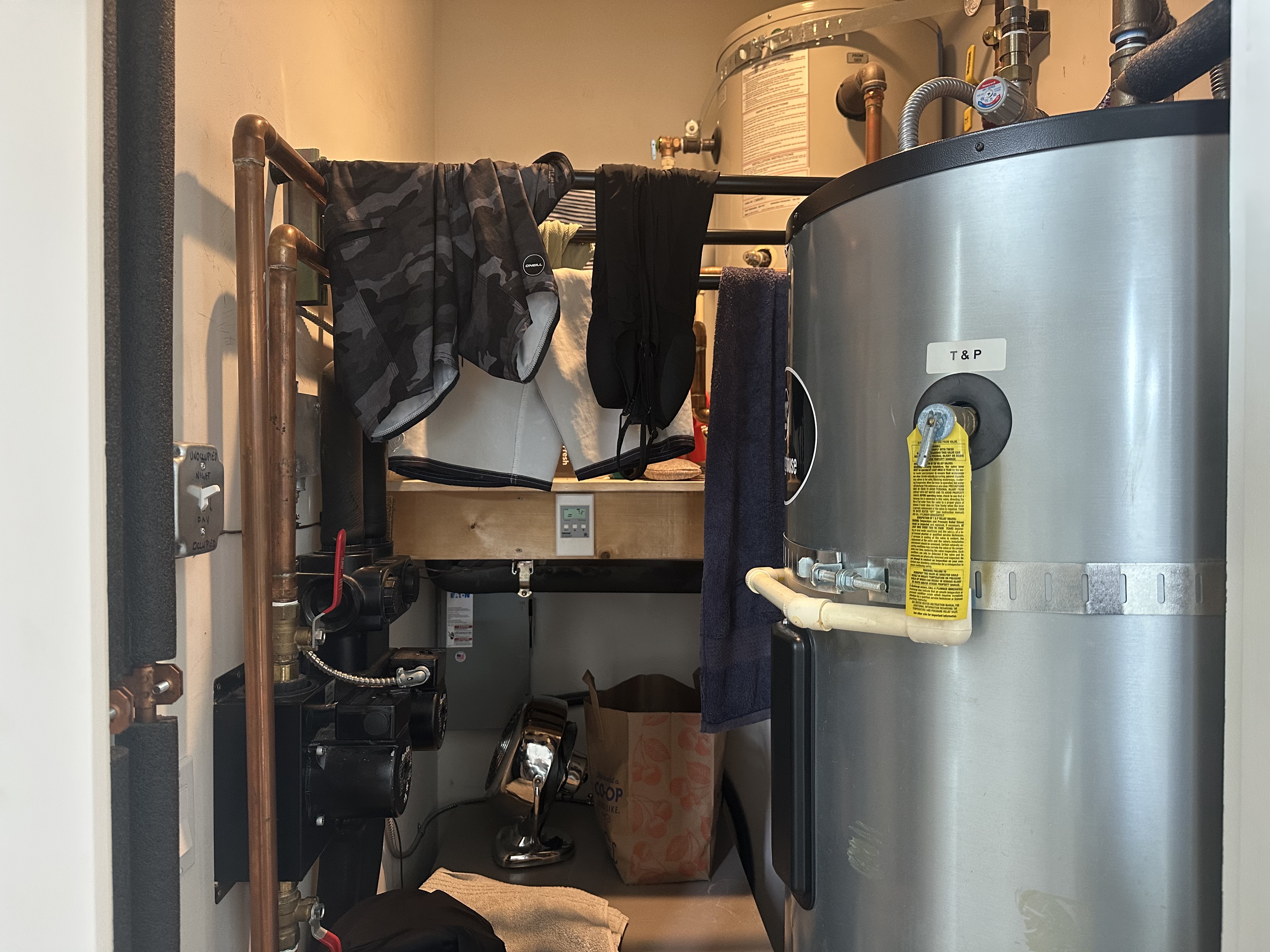
Peter and Brigitte’s home maximizes energy efficiency with its advanced lake-sourced climate control system.
Peter, who attended the School of Architecture at the University of Washington and is now a developer, made “warmth [their] number one priority” after living in an uninsulated floating home from 1972 to 2017, where they were often wearing jackets inside in winter.
Their solution is a lake-sourced heat exchanger that powers radiant floors. This system relies on a heat pump system beneath the float, specifically drawing energy from a large 6-by-6-by-6-foot radiator submerged 17 feet below the surface.
At that depth, the lake maintains a consistent temperature, which Peter notes is 54 degrees year-round. The heat pump, utilizing an inverter system, “sucks heat up” from this stable lake temperature.
Peter said the city originally discouraged the idea. “They thought we were heating the lake,” he said. “But actually we’re cooling the lake.”
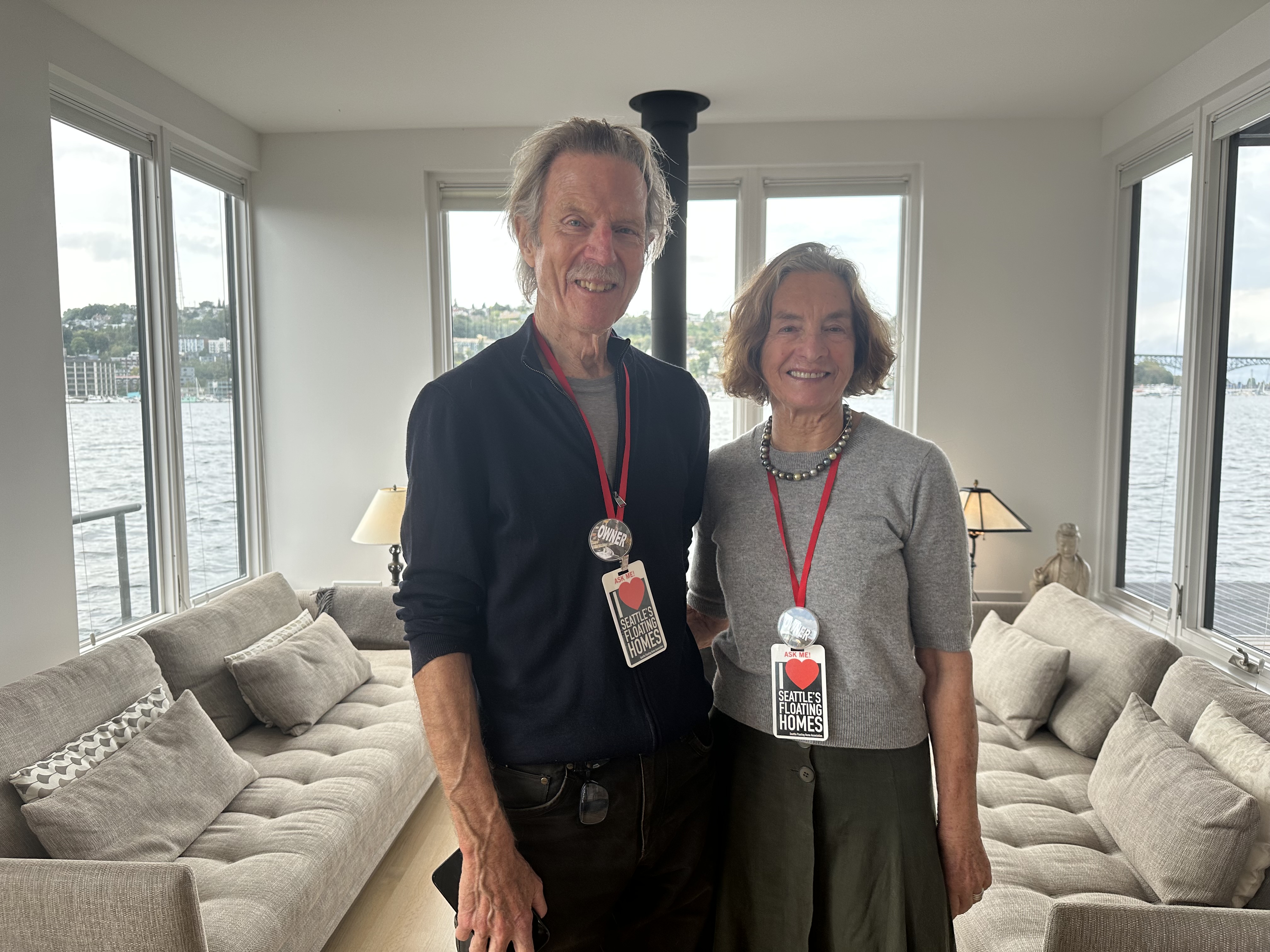
The extracted energy circulates through tubing embedded every six inches beneath their floors, providing efficient radiant heat throughout the home.
This advanced system has led to remarkably low operating costs. Their energy bills for heating and electricity are just $65/month, far below their previous heating costs of $200/month during the winter.
Beyond space heating, the system also preheats their domestic hot water, further maximizing efficiency and contributing to their low overall energy consumption.
Tim Carlander & Bill Vandeventer’s home
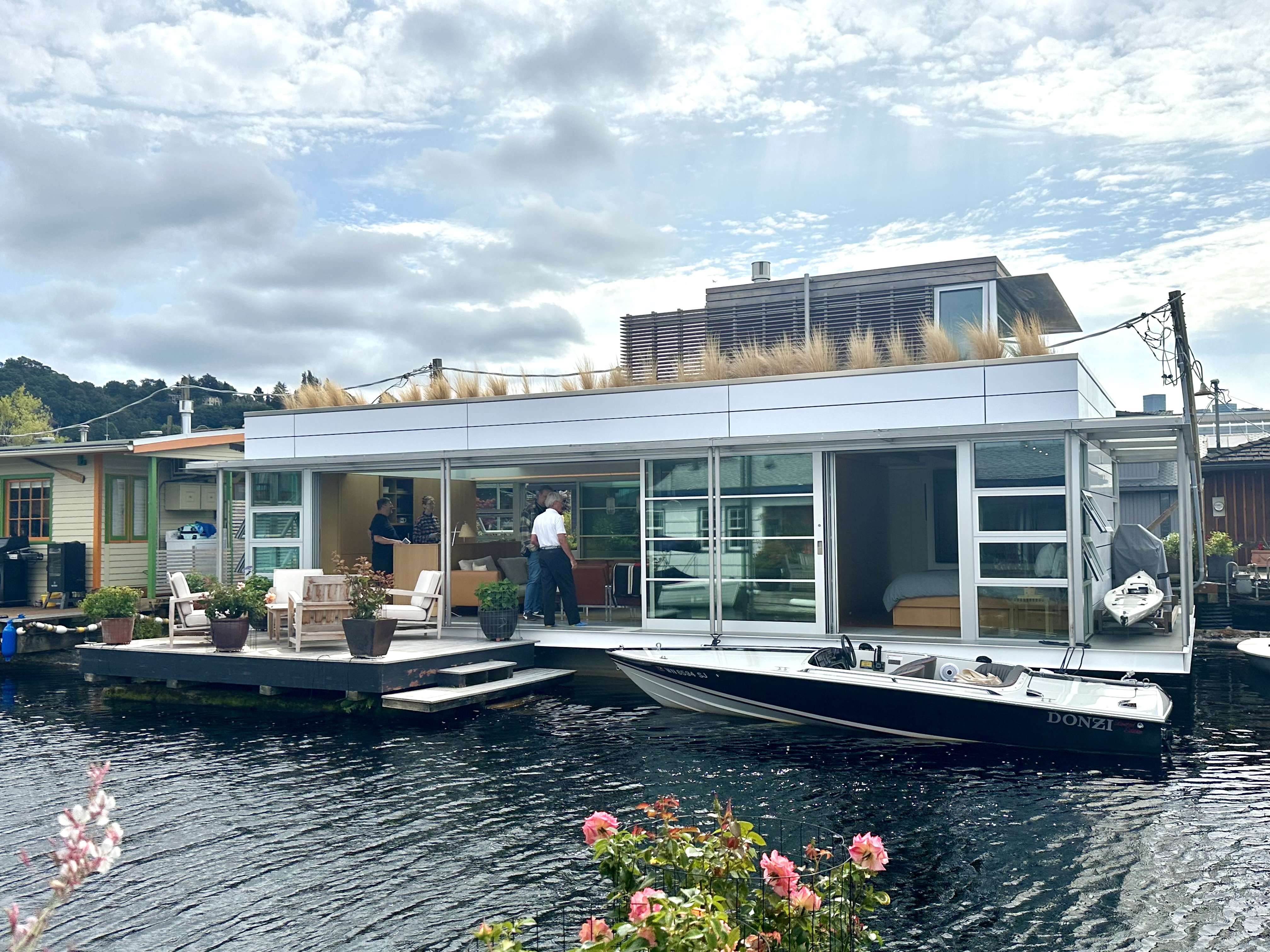
Architect Tim Carlander and Bill Vandeventer’s new home showcases a whole array of cutting-edge green technologies.
At the heart of their home’s climate control is a water-based heat pump system that powers radiant floors, similar in concept to Peter and Brigitte’s.
There’s a “big thin plate totally submerged in the lake,” Tim said, which works by “drawing energy out of the lake, and then it goes into a heat pump down in the basement.” The warmed water then moves into a storage tank before circulating through hydronic tubing beneath the hardwood floors, divided into four distinct zones within the house, with each programmable to a different temperature.
Although costly to install initially, it’s cheap to operate: “It’s an inexpensive heating system from a use standpoint,” Tim said.
The system is also very eco-friendly, and he argues wider adoption would be a game changer: “If everybody could have a heat pump, we’d be a big step ahead, as far as both pollution and energy costs,” said Tim.
Another significant advantage is the absence of noise or blowing air, a welcome benefit for a home shared with two labrador retrievers.
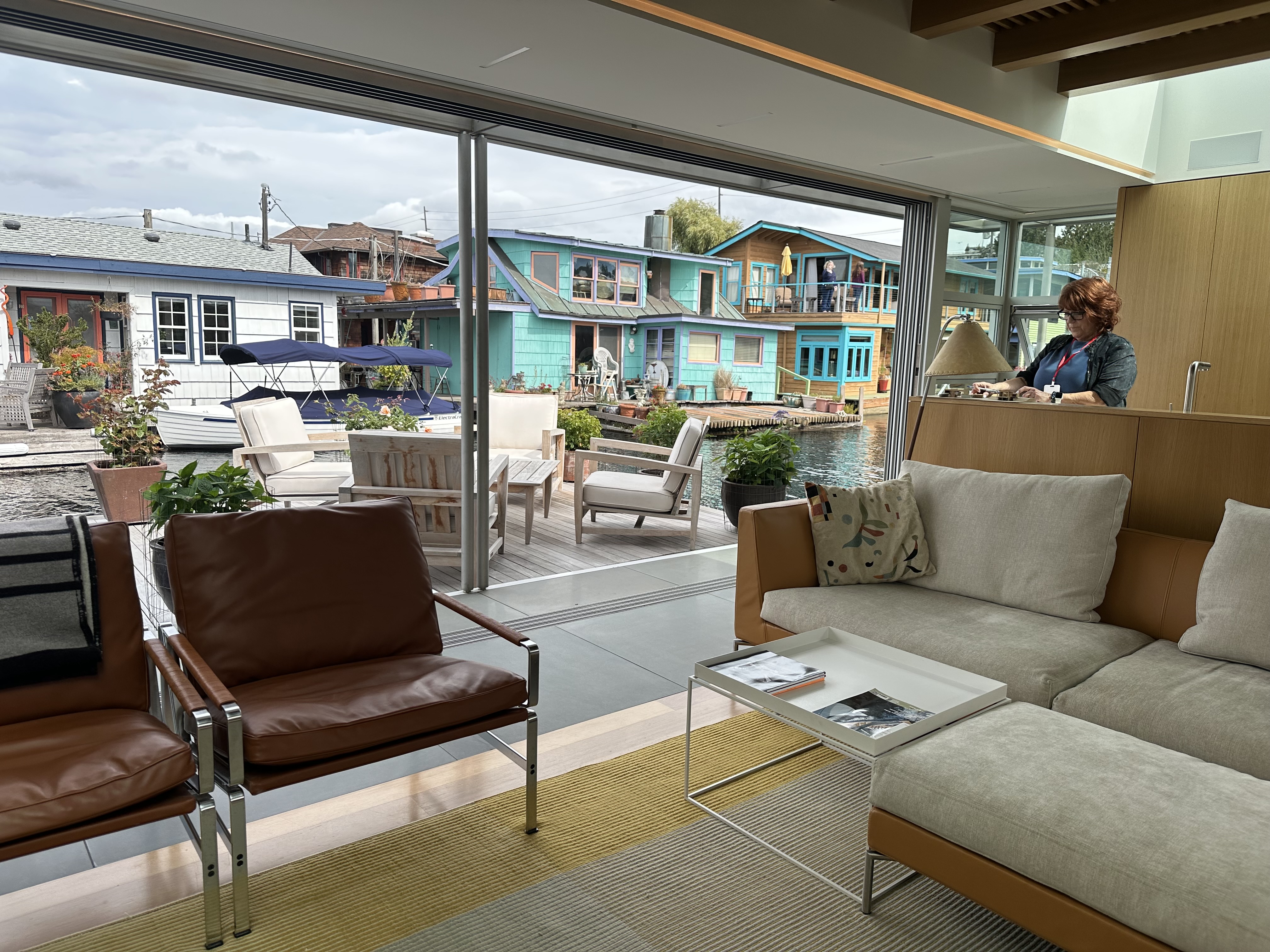
Beyond heating, the home integrates several other cutting-edge sustainable features:
- Hollow float: The home’s foundation itself is a hollow float, designed to optimize space.
- Lutron system for LED lighting: All LED lighting throughout the house is controlled by a “Lutron low-voltage system.”
- Motorized window shades: For convenience and to further enhance thermal efficiency, the house is equipped with motorized window shades.
- Planted roof: The roof is designed with a planted surface, which both reduces UV damage to the structure and provides additional insulation, improving energy efficiency.
Heidi and Kevin Eagleton’s home

Architect Heidi Eagleton designed her unusually shaped home around the bones of an older structure that reminded her of a lighthouse, incorporating clever solutions for stability and aesthetics. She continued this metaphor, pointing out her office from which she has written two children’s books, and is now writing a memoir, describing it as “the keeper’s office… so it supports the lighthouse.”
One notable feature is her system of disguised weight-balancing planters. These are strategically filled with water to help stabilize her home. “[The planters] counterbalance the live loads from people. Each one of those containers is about 100 pounds, and I put spigots in the bottom. And so when everybody leaves, I let the water [out],” Heidi explained.
On the balcony, the Mondrian-inspired painted plywood ceiling offers a low-cost, artistic alternative to expensive wood decking, drawing inspiration from the South Texas tradition of painting ceilings blue to deter wasps.
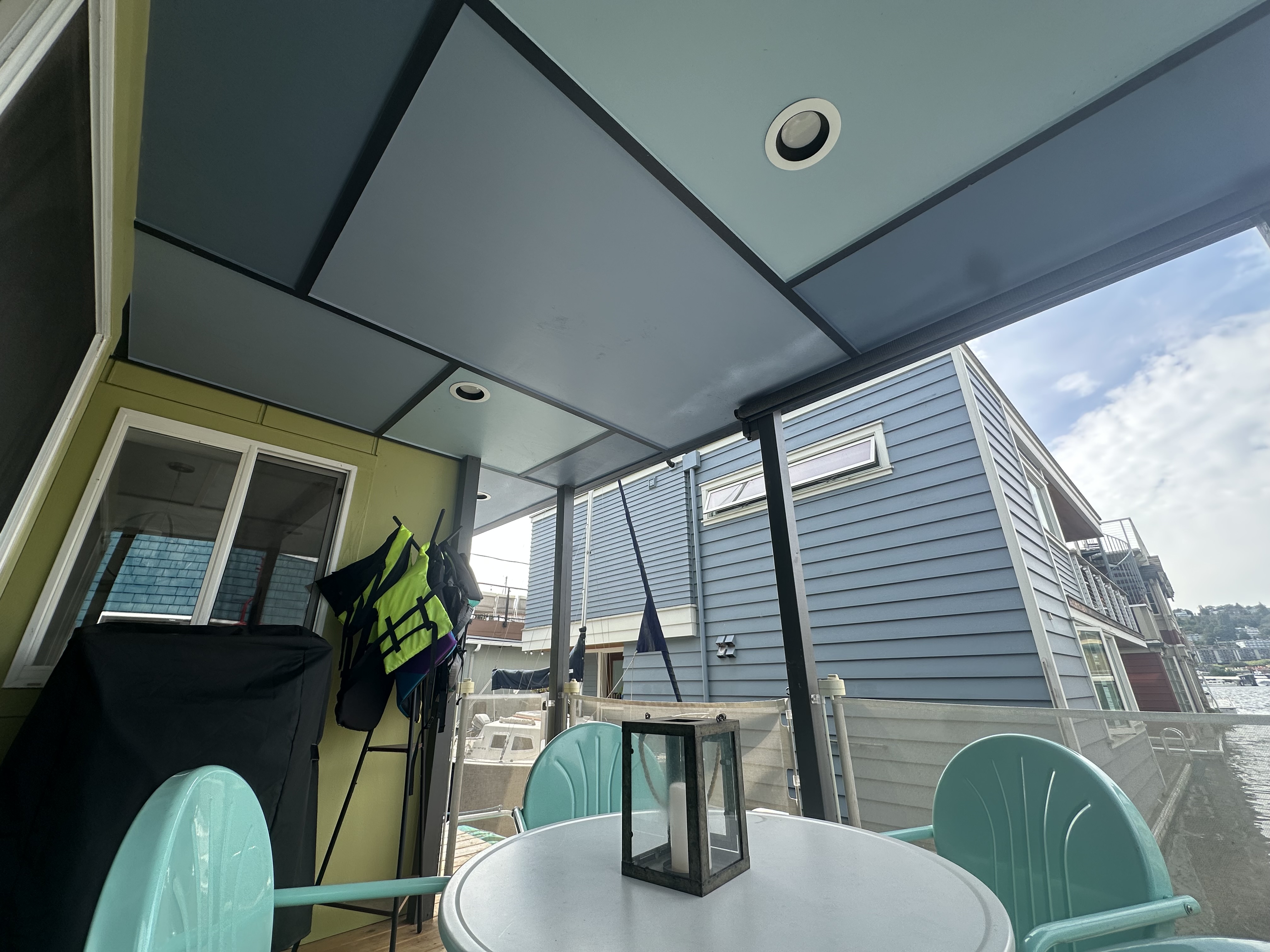
The home also features a rooftop garden with solar lighting, specifically designed to minimize glare for neighbors, a thoughtful touch for the close-knit community. The roof itself uses tiles on pedestals, which allow water to flow underneath and off, improving drainage.
These homes show how residential living, even in unique environments like a floating home community, can be at the forefront of technological innovation and environmental responsibility.
By leveraging their surroundings, Seattle residents are paving the way for more sustainable housing solutions in the future.
Read the full article here



